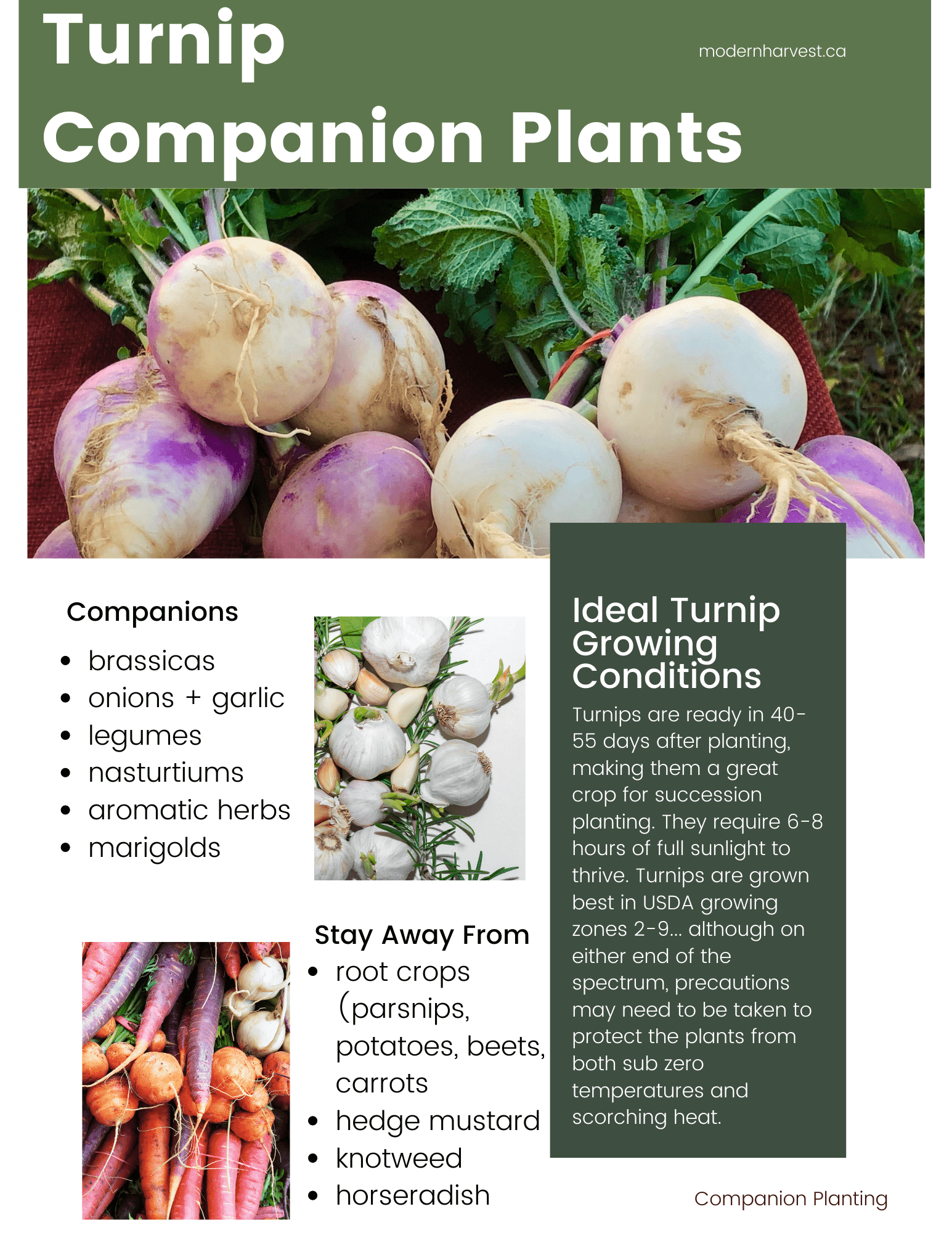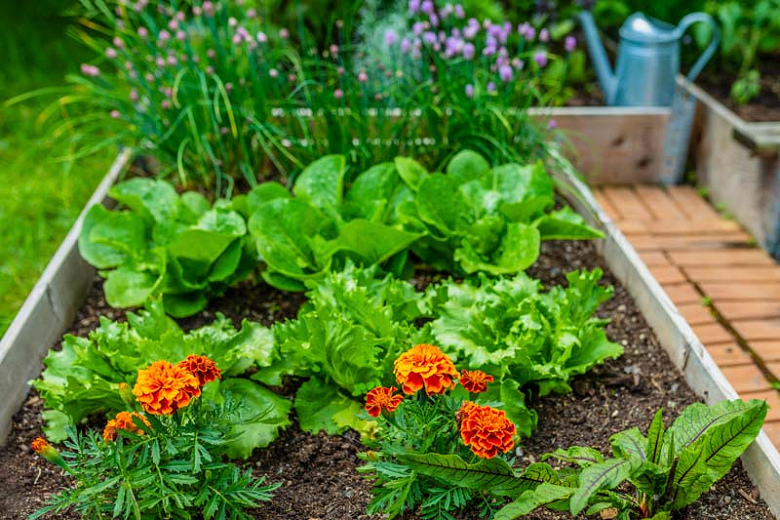Turnip Companion Plants That Will Boost Your Yield
Turnips are a cool-season vegetable that is easy to grow and can be enjoyed in a variety of ways. They are a good source of vitamins C and K, as well as fiber. Turnips can be eaten raw, cooked, or pickled.
One way to improve the yield of your turnip crop is to plant companion plants. Companion planting is the practice of planting different types of plants together in order to benefit each other. Some companion plants can attract beneficial insects, deter pests, or improve the soil quality.
Here are some of the best companion plants for turnips:
- Legumes: Legumes, such as beans, peas, and lentils, are nitrogen-fixing plants. This means that they can convert atmospheric nitrogen into a form that other plants can use. Nitrogen is an essential nutrient for plant growth, so planting legumes with turnips can help to improve the soil quality and boost the yield of your turnip crop.
- Aromatic herbs: Aromatic herbs, such as basil, mint, and rosemary, can help to deter pests from your turnip crop. These herbs have strong scents that can mask the smell of turnips, making them less attractive to pests.
- Cabbage family vegetables: Turnips are part of the Brassica family, which also includes broccoli, cabbage, and cauliflower. These vegetables can help to attract beneficial insects, such as ladybugs and lacewings, which can help to control pests.
- Marigolds: Marigolds are another great companion plant for turnips. They have a strong scent that can repel pests, such as aphids and nematodes. Marigolds can also help to improve the soil quality by suppressing the growth of harmful fungi.
- Nasturtiums: Nasturtiums are another flowering plant that can help to deter pests from your turnip crop. They have a strong scent that can mask the smell of turnips, making them less attractive to pests. Nasturtiums can also help to attract beneficial insects, such as ladybugs and hoverflies.
When choosing companion plants for your turnips, it is important to consider the size and growth habit of the plants. Some plants, such as peas and beans, will need to be supported by a trellis. Other plants, such as marigolds and nasturtiums, will spread out and may need to be trimmed regularly.
It is also important to consider the climate in your area when choosing companion plants. Some plants, such as basil and rosemary, are not cold-hardy and will not survive in cold winter climates.
By planting companion plants with your turnips, you can improve the yield of your crop and reduce the amount of pests and diseases that your plants are exposed to. This can save you time and money in the long run.
Turnip companion planting is a great way to improve the growth and health of your turnips, as well as to deter pests and diseases. Some of the best companion plants for turnips include:
- Legumes: Legumes, such as peas and beans, are nitrogen-fixing plants, which means they can help to improve the nitrogen content of the soil. This is beneficial for turnips, as they are heavy feeders.
- Aromatic herbs: Aromatic herbs, such as basil, rosemary, and thyme, can help to repel pests and attract beneficial insects. This can help to keep your turnips healthy and free from damage.
- Brassicas: Other brassicas, such as broccoli, cabbage, and kale, can help to attract pests away from your turnips. This is because pests tend to prefer to feed on one type of plant, so by planting different brassicas together, you can help to confuse them and keep them away from your turnips.
For more information about turnip companion planting, I recommend visiting Gardenia Inspiration. This website has a comprehensive guide to companion planting, with information on all sorts of different vegetables, including turnips.
FAQ of turnip companion plants
- What are some good companion plants for turnips?
Turnips are a cool-season crop that can be planted in the spring or fall. They prefer full sun and well-drained soil. Some good companion plants for turnips include:
- Brassicas: Other members of the Brassica family, such as broccoli, kale, cauliflower, and Brussels sprouts, are great companion plants for turnips. They help to deter pests and diseases.
- Legumes: Legumes, such as peas and beans, fix nitrogen in the soil, which can benefit turnips.
- Herbs: Herbs, such as mint, rosemary, and thyme, can help to repel pests and diseases.
- Flowers: Flowers, such as marigolds and nasturtiums, can attract beneficial insects that help to control pests.
- Spinach: Spinach is a fast-growing crop that can help to shade the soil and suppress weeds.
- What are some bad companion plants for turnips?
Turnips should not be planted near plants that are susceptible to the same pests and diseases, such as cabbage, cauliflower, and broccoli. They should also not be planted near alliums, such as onions, garlic, and leeks, as these plants can compete for nutrients.
- How far apart should turnips be planted?
Turnips should be planted 2-3 inches apart. If you are planting them in rows, the rows should be 12-18 inches apart.
- How long does it take turnips to grow?
Turnips can be harvested in as little as 30 days, but they will typically take 45-60 days to reach maturity.
- How do you harvest turnips?
To harvest turnips, simply pull them out of the ground. Be sure to leave a few inches of the stem attached so that the turnip can continue to store nutrients.
Image of turnip companion plants
5 different images of turnip companion plants from Pinterest:
- Carrots. Carrots and turnips are both root vegetables that benefit from being planted together. Carrots help to keep the soil loose and aerated, which helps turnips to grow large and healthy roots.

- Cucumbers. Cucumbers and turnips can be planted together because they have different growing requirements. Cucumbers need full sun and well-drained soil, while turnips can tolerate partial shade and heavier soils.

- Lettuce. Lettuce and turnips can be planted together because they both have shallow root systems. This means that they will not compete for water or nutrients. Lettuce also helps to shade the soil, which can help to keep turnips cool and prevent them from bolting.

- Peas. Peas and turnips can be planted together because they have different nutrient requirements. Peas fix nitrogen in the soil, which helps to fertilize the turnips. Peas also help to suppress weeds, which can compete with turnips for sunlight and water.

- Spinach. Spinach and turnips can be planted together because they have similar growing requirements. They both need full sun and well-drained soil. Spinach also helps to suppress weeds, which can compete with turnips for sunlight and water.

Post a Comment for " Turnip Companion Plants That Will Boost Your Yield"